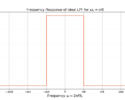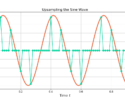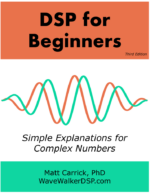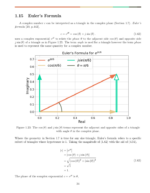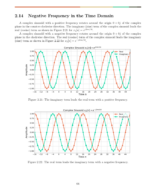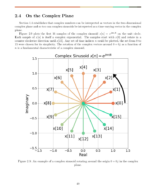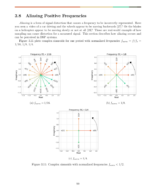Table of Contents
Introduction
A low-pass single pole infinite impulse response (IIR) filter is transformed into a band pass filter using simple mathematics!
A previous blog described the frequency response of the single pole IIR filter and how it can be a substitute for a moving average filter.
Don’t miss these other blogs!
Reviewing the Low Pass Filter
A previous blog described how a specific implementation of a single pole IIR filter can be used to approximate a low pass moving average filter. The impulse response of this filter is defined as
(1) ![]()
which may also be referred to as an exponential moving averager or a leaky integrator. The impulse response in (1)
is simplified by setting
(2) ![]()
such that
(3) ![]()
The frequency response for the low pass filter (LPF) (3) is
(4) ![]()
Transformation into Band Pass Filter
The LPF single pole IIR filter can be transformed into a band pass filter (BPF) through complex frequency shifting. The center frequency of the band pass filter is defined to be ![]() and the frequency is shifted according to the substitution
and the frequency is shifted according to the substitution
(5) ![]()
The frequency response for the BPF filter is therefore
(6) ![]()
The LPF frequency response (4) is substituted into (6),
(7) 
The frequency response is represented using the output ![]() and the input
and the input ![]()
(8) 
which is rearranged into
(9) ![]()
and simplified as
(10) ![]()
The impulse response is obtained by applying the inverse Z-transform
(11) ![]()
which is more commonly written as
(12) ![]()
The feedback filter coefficient for the LPF is ![]() however the bandpass version includes a complex weight
however the bandpass version includes a complex weight ![]() .
.
Plotting Examples
The following plots show the frequency response for the band pass single pole IIR with ![]() . Figure 1 gives the magnitude of the frequency response and Figure 2 gives the phase of the frequency response. Compare the plots against the LPF in the previous blog post.
. Figure 1 gives the magnitude of the frequency response and Figure 2 gives the phase of the frequency response. Compare the plots against the LPF in the previous blog post.
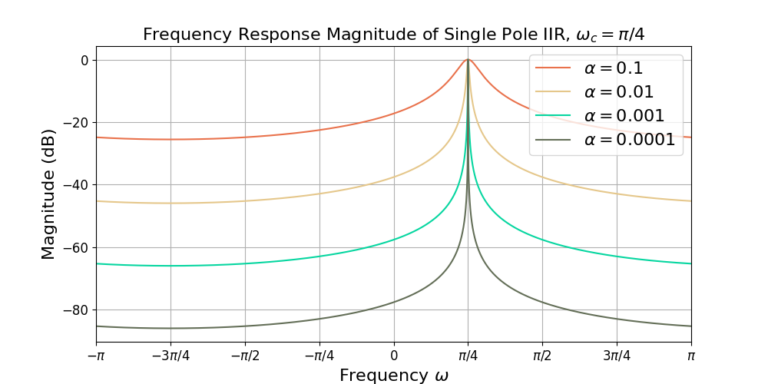
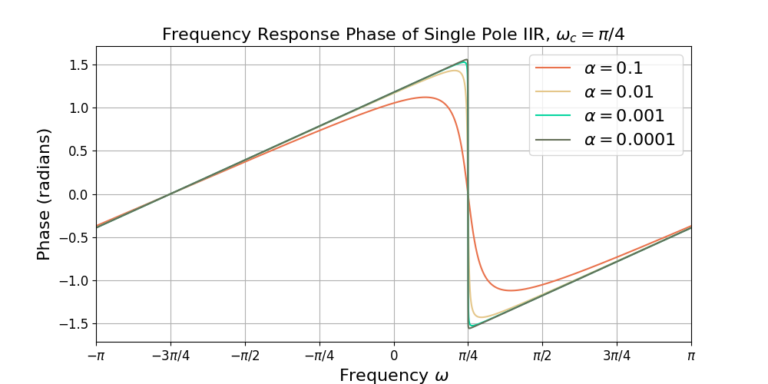
Conclusion
A low-pass single pole IIR filter can be transformed into a band pass through complex frequency shifting. The impulse response for the IIR filter is modified by using a complex exponential as the feedback filter coefficient.
![Figure 1: The two sequences for the autocorrelation of x0[n] and x0[n].](https://www.wavewalkerdsp.com/wp-content/uploads/wordpress-popular-posts/5515-featured-125x100.png)
